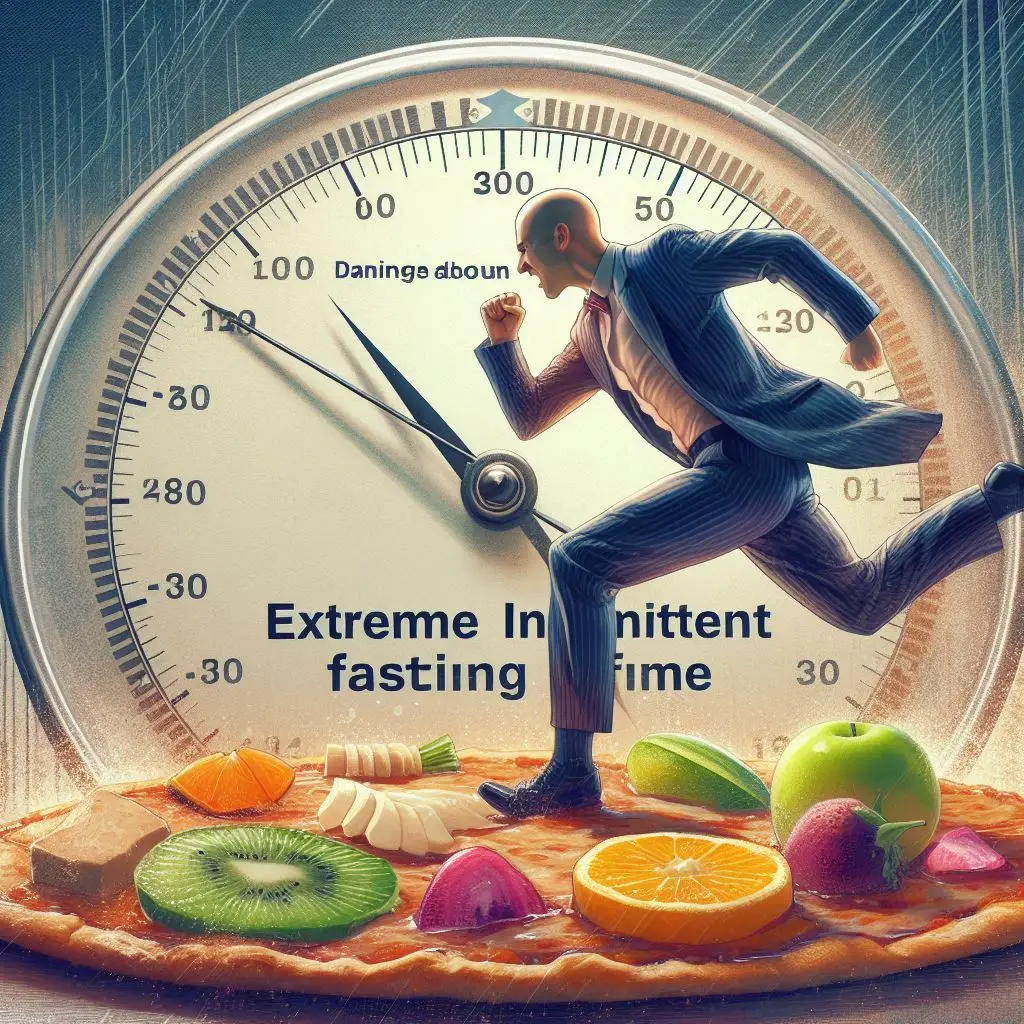Imagine locking your kitchen behind an iron gate and handing the key to a clock — it decides when you feast and when you fast. This is the world of extreme intermittent fasting, one of the most punishing yet popular drastic weight loss methods embraced by those who want their fat to melt like wax under a blowtorch.

While traditional intermittent fasting might involve skipping breakfast or eating within an 8-hour window, extreme versions take things to gladiator levels: eating only once a day (OMAD), fasting for 20+ hours, or even going entire days without food.
But is this discipline or dietary warfare?
The Clock as Commander
Extreme intermittent fasting turns time into a tyrant. It’s like joining a military regimen where meals are permitted only when the bugle blows. For 20 or even 24 hours, the body marches on nothing but water, black coffee, or sheer willpower.
Then comes the “feeding window” — a brief, almost sacred period where the gate opens, and calories are finally allowed in. The logic? By giving the body long stretches without food, insulin drops, stored fat is unlocked, and the body becomes a furnace for fat.
And truth be told — it works. Fat is burned, especially in the beginning. The body, denied its usual snacks and meals, starts dipping into its reserves like a squirrel cracking into winter rations. But behind this strategic hunger lies a battlefield.
A Method Carved in Hunger
Among drastic weight loss methods, extreme intermittent fasting is perhaps the most deceptively simple. No pills, no powders, no grocery overhauls. Just a clock, a plan, and a whole lot of patience.
But the hunger isn’t passive. It’s a beast you must cage with mental steel. Every minute past the 16th hour feels longer. Your energy dips. Your mood may swing like a pendulum. For some, this builds discipline. For others, it becomes a daily warzone.
You begin treating hunger like an enemy. You don’t listen to your body — you override it.

The Illusion of Mastery
There’s a strange pride that comes with extreme intermittent fasting. Eating once a day becomes a badge of honor — a mark of control in a chaotic world. You post your 24-hour fasting streaks, your waistline shrinks, and the compliments flood in.
But here’s the twist: the body remembers every skipped meal. Behind the scenes, metabolism begins to whisper, “Store more next time. Slow down. Prepare for famine.” Hormones shift. For some, sleep suffers. For others, mental clarity increases — at least temporarily.
It’s a dance on the razor’s edge — exhilarating, but not without cost.
When Fasting Becomes Feasting
Ironically, many people who practice extreme intermittent fasting end up bingeing during their feeding window. It’s like starving an animal all day, then letting it loose in a buffet. This can create a vicious cycle of deprivation and overconsumption — the very thing most people are trying to avoid.
And this pattern? It’s common across many drastic weight loss methods. The pendulum swings hard in both directions: starvation followed by indulgence, control followed by collapse.
Is It a Lifestyle or a Landmine?
Extreme intermittent fasting is not just a weight loss tool — it’s a psychological journey. It teaches you to delay gratification, to listen to time more than temptation. But it also risks turning food into an enemy, and hunger into a constant companion.
In the realm of drastic weight loss methods, this one wears a suit of discipline — but underneath, it carries the same dangers: metabolic slowdown, nutritional deficiencies, and the risk of obsession.
So before you hand the keys of your hunger to the clock, ask yourself: Are you creating a sustainable rhythm, or playing a high-stakes game of dietary roulette?
Fat loss, at its best, is not about punishing the body into submission. It’s about nourishing it in harmony. Even the strongest warriors need to eat — not just when the clock allows, but when the body truly calls.




